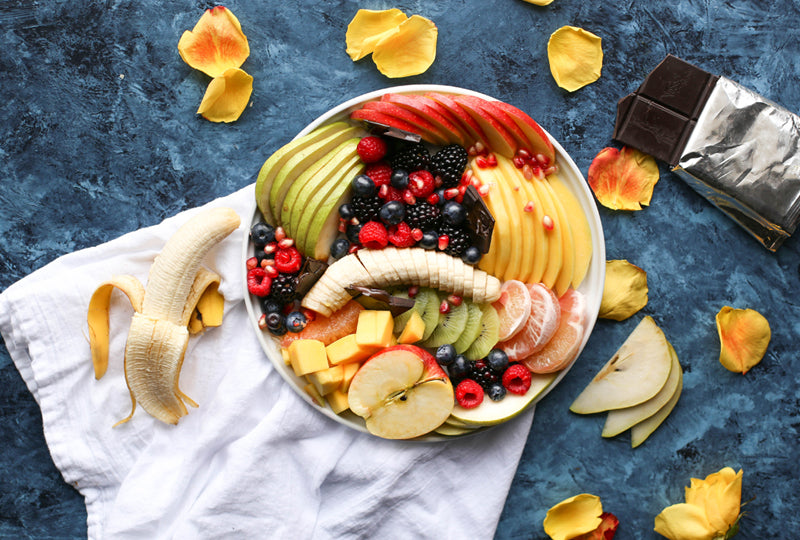
With the perils of a global pandemic looming over everyone, the thought of integrating healthy food alternatives in our daily lifestyle is increasingly becoming prominent. We all know about the implications of COVID-19 on the natural barriers of the human body and therefore are keen to include healthy eating habits. People might suggest going for a Keto, Paleo or Vegan diet, but have you thought of following an Ayurvedic diet?
According to Ayurveda, everyone has different dietary requirements and thus specific body types need a particular diet. The importance of the right diet and nutrition in the Ayurveda system of medicine cannot be underestimated. The breakdown of food is done by Agni or fire in Ayurveda, which is also helpful for people who consume non-vegetarian food as a source of protein and energy.
What can be considered a good meal as per the Ayurvedic standards, you ask? Any meal that is well balanced and has the amount of needed nutrients along with the colours, aromas, flavours and textures to soothe our organic senses. This also means that the meal must not contain any artificial flavouring, colours and scents.
Herbs and spices play a pivotal role in Ayurvedic recipes. Ayurveda considers that a person can consume herbs before a meal, during a meal and after a meal. The medicinal value of herbs is known to increase the digestive process and helps in the breakdown of food by their ability to heal and nurture the body’s organs, cells and tissues. Herbs also help in cleansing the human body system and in eliminating toxins and impurities.
Ayurveda recommends foods based on the dosha ‘prakriti’ of each person to help remain healthy.
(a). Vata Pacifying Foods: This includes cow ghee, whole wheat chapatis, mung beans sprouts, and spices like hing and cumin which help improve digestion. The consumption of warm and cooked foods like soups, dals and sabzi made of green beans, peas, pumpkin, spinach is highly recommended. A little bit of ‘tadka’ on the dal can do you a great deal of good. Sweet potatoes cooked with the addition of onions and coriander with vegetable salads made of beetroot, carrots, cucumber, and cooked whole grains like oats, quinoa, all forms of rice and Indian wheat flour can help in balancing the Vata dosha. Inclusion of fruits like melons, mangoes, bananas and peaches, can also help vata individuals. Occasional binge on spicy food is good, without any issues.
(b). Pitta Pacifying Foods: For the Pitta types, lunch or dinner containing grains like rice and beans, and fruits like apples, avocados, coconuts, figs, melons, oranges, pears, plums, pomegranates, and mangoes are suitable. Raw vegetables like cabbage, cucumber, cauliflower, green beans, lettuce, peas, potatoes, sprouts and mushrooms cooked with spices such as cumin and coriander are highly recommended to help them cool down excess fire in the stomach. Pitta types must avoid fermented foods, especially excess intake of curd, bakery items, or dosa and idli, since these tend to aggravate pitta. Also, intake of less spicy and hot foods is recommended, since they are already quite heated up
(c). Kapha Pacifying Foods: For the Kapha types, spicy and bitter tastes are beneficial, since it wakes them up, and activates them. Foods like rice and millet, leafy vegetables, barley flour are light and well suited to the heavy Kapha types. Red beets, cabbage, carrots, cauliflower, eggplant, garlic, lettuce, mushrooms, peas, radish, spinach, onions and sprouts do good to their tummy. Herbs and spices like ginger, garlic, fennel, chilli and turmeric are highly recommended. They must go a little light on the oils and fatty foods to avoid lethargy and an imbalance of Kapha.
Ayurvedic diet does not recommend foods that are refined, canned or frozen as they are unhealthy for the body. Also, avoid processed foods with additives, artificial coloring and flavorings. We hope that with this you’ll be able to imbibe the goodness of Ayurveda in your everyday lifestyle with ease. Please do share your experiences and thoughts in the comments below after trying the Ayurvedic diet!

Comments (0)
Back to News